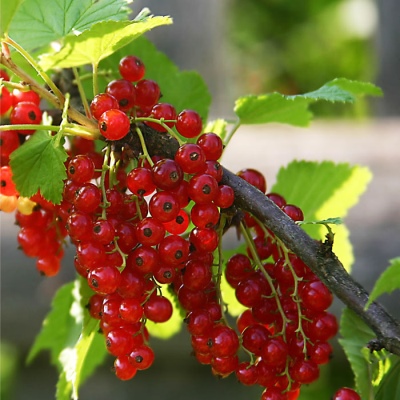
- Authors: N.K.Smolyaninova, A.P. Nitochkina (VSTISP)
- Appeared when crossing: Chulkovskaya x Laturnais
- Year of approval: 1974
- Ripening terms: early ripening
- Growth type: medium-sized
- Yield: medium
- Appointment: universal
- Berry weight, g: 0,6-0,9
- Tasting assessment: 4
- Escapes: non-lignified - of medium thickness, green, with a reddish "tan", without pubescence; lignified - medium thickness, gray-brown
Currant is one of the most popular shrubs to be grown in gardens. The berries harvested in summer can be used for baking or eaten fresh. The versatility of using red currant makes it so popular, however, before you get a high-quality Early Sweet crop, you need to familiarize yourself with the rules of growing and caring for the plant.
Breeding history
The work on the breeding of the Early Sweet variety was carried out at VSTISP by two researchers: N.K.Smolyaninova, A.P. Nitochkina. The described plant was allowed to be used in 1974.
Description of the variety
This is one of the varieties of red currant. Berries have a universal purpose. Early sweet is a medium-sized shrub. Plants grow semi-sprawling, up to 1.5 m high.
Early sweet shoots are green, characterized by a reddish tint. Pubescence is absent. Brushes are formed long, dense, can reach 9 cm.
Characteristics of berries
Red berries, small in size, maximum weight 0.9 g.
Taste qualities
The fruits of this plant have a sweet and sour taste and are very refreshing.
Ripening and fruiting
From the name it is clear that this red currant is of an early ripening period. Begins to bear fruit in June.

Yield
This parameter can be characterized as average, at the level of 12 t / ha or 3.3 kg / bush.
Growing regions
With great success, Early Sweet currant is grown in regions such as:
Central;
TsCHO;
East Siberian;
Volgo-Vyatsky.
Self-fertility and the need for pollinators
This variety is self-fertile.
Landing
For planting, it is better to choose strong, well-rooted plants. The best time is early autumn, around mid-October. This is due to the early growing season.
And you can also plant a shrub in early spring, before sap flow begins, so we avoid damage to the buds and bypass the danger of a water shortage in the soil.
Remove damaged roots before planting. You will need to mix the soil with a dose of manure or compost. We place the currants in the soil a little deeper than they grew in the nursery. This will provide the root system with easy access to the moist soil layer. We keep a distance of 1.5 m between the bushes. After planting the Early Sweet bushes, cut them low. We leave only 1-3 buds above the ground. We mulch the land around the bushes well. This will limit the growth of weeds and freezing of the base.

Growing and care
When growing this shrub, you should know that it loves a sunny place and moist soil. Watering will need to be especially carefully monitored during flowering and fruit ripening.
The most important procedure for growing this red currant variety is keeping the soil around the plant clean. If the gardener decides to abandon mulch, systematic destruction of weeds that grow in the root zone in the spring will be required. You can sprinkle the soil around with sawdust, bark, rotted compost or mowed grass.
Annual fertilization of Early Sweet shrubs is very important, especially with nitrogen compounds. Currants need large doses of nutrients. Every two years in early spring, you need to feed the bushes with manure. It must be remembered how this plant is sensitive to the lack of water in the soil. Even short periods of drought, especially at the time of fruit setting and ripening, negatively affect the quality and quantity of the crop. During dry summers, regular watering is necessary, especially for young plantings.
Another very important procedure for the care of the described currant is pruning. Cut out 4-year-old and 5-year-old shoots. This will allow the plant to rejuvenate in time. Be sure to also remove dried and diseased branches, as well as young, over-thickening bush.
If you want to rejuvenate the old currant bush Early Sweet, you should not remove a large number of perennial shoots. Cut off half, leaving part for the next year. Thus, the rejuvenation procedure is stretched over several years so as not to damage the bush.




Disease and pest resistance
Early sweet currant is highly resistant to many diseases, but has absolutely no immunity to anthracnose and poor immunity to powdery mildew.

Currant is one of the most favorite crops of gardeners, it can be found on almost any personal plot. In order for the currant berries to be tasty and large, and the bush itself to be healthy and strong, you should properly care for, treat and protect the plant from harmful insects. It is important to recognize the signs of the disease in a timely manner and begin treatment in the early stages of plant damage.
Resistance to adverse climatic conditions
The described variety is winter-hardy, it has a weak shedding of berries, which is one of its main advantages.










































































